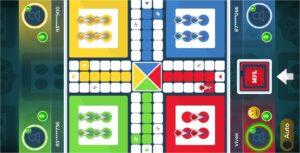
For this critical play, I focused on Ludo, offline version. It is a popular strategy board game. It is an ancient game that was created in South Asia in the sixth century.
Audience: Ludo is played by people of all ages and backgrounds. I would say it is 5+ due to choking hazard and requirement of certain cognitive skills.
Formal Elements: When playing, two to four players race their four tokens from beginning to end in line with the outcomes of a single dice roll. The goal of the game is to be the first player to get all of their game pieces to the finish line. The rules of the game involve rolling dice to determine the number of spaces to move, following the specific path on the board, and capturing other players’ game pieces. The procedures involve taking turns rolling the dice and moving game pieces according to the rules. The resources in Ludo include the board, game pieces, and dice. The boundaries of the game are the edges of the board and the rules of the game. The outcomes of the game include winning or losing.
My moment of success was winning the second game with my friends. An epic fail was failing to roll “six” on the dice and getting a very late start to the game. Also, once my dice fell outside the board and under the table, which required a refresh.
Type of fun: Challenge as players have the chance to make minor decisions based on dice roll to meet their objective which is to the first to finish. It can also be provide elements of Fellowship, since it is often played as a party/social game to improve social bonding.
In terms of improvements to suggest, I would say that while ludo is replayable, it becomes a bit boring to replay in the same session. It would be great to have multiple board layouts and also possibly differently designed counters because that might make it replayable within the same session.


